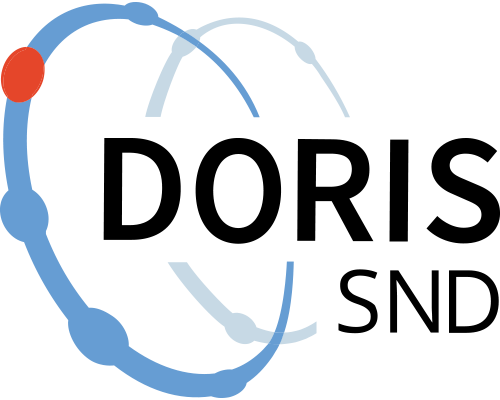CALY-SWE: Discrete choice experiment and time trade-off data for a representative Swedish value set
https://doi.org/10.5878/asxy-3p37
The data consist of two parts: Time trade-off (TTO) data with one row per TTO question (5 questions), and discrete choice experiment (DCE) data with one row per question (6 questions). The purpose of the data is the calculation of a Swedish value set for the capability-adjusted life years (CALY-SWE) instrument. To protect the privacy of the study participants and to comply with GDPR, access to the data is given upon request.
The data is provided in 4 .csv files with the names:
- tto.csv (252 kB)
- dce.csv (282 kB)
- weights_final_model.csv (30 kB)
- coefs_final_model.csv (1 kB)
The first two files (tto.csv, dce.csv) contain the time trade-off (TTO) answers and discrete choice experiment (DCE) answers of participants.
The latter two files (weight_final_model.csv, coefs_final_model.csv) contain the generated value set of CALY-SWE weights, and the pertaining coefficients of the main effects additive model.
Background:
CALY-SWE is a capability-based instrument for studying Quality of Life (QoL). It consists of 6 attributes (health, social relations, financial situation & housing, occupation, security, political & civil rights) and provides the option to gives for attribute answers on 3 levels (Agree, Agree partially, Do not agree).
A configuration or state is one of the 3^6 = 729 possible situations that the instrument describes. Here, a config is denoted in the form of xxxxxx, one x for each attribute in order above. X is a digit corresponding to the level of the respective attribute, with 3 being the highest (Agree), and 1 being the lowest (Do not agree). For example, 222222 encodes a configuration with all attributes on level 2 (Partially agree).
The purpose of this dataset is to support the publication of the CALY-SWE value set and to enable reproduction of the calculations (due to privacy concerns we abstain from publishing individual level characteristics). A value set consists of values on the 0 to 1 scale for all 729, each of represents a quality weighting where 1 is the highest capability-related QoL, and 0 the lowest capability-related QoL.
The data contains answers to two types of questions: TTO and DCE.
In TTO questions, participants iteratively chose a number of years between 1 to 10. A choice of 10 years is equivalent to living 10 years with full capability (state configuration 333333) in the capability state that the TTO question describes. The answer on the 0 to 1 scale is then calculated as x/10.
In the DCE questions, participants were given two states and they chose a state that they found to be better.
We used a hybrid model with a linear regression and a logit model component, where the coefficients were linked through a multiplicative factor, to obtain the weights (weights_final_model.csv). Each weight is calculated as constant + the coefficients for the respective configuration. Coefficients for level 3 encode the difference to level 2, and coefficients for level 2 the difference to the constant. For example, for the weight for 123112 is calculated as constant + socrel2 + finhou2 + finhou3 + polciv2 (No coefficients for health, occupation, and security involved as they are on level 1 that is captured in the constant/intercept).
To assess the quality of TTO answers, we calculated a score per participant that takes into account inconsistencies in answering the TTO question. We then excluded 20% of participants with the worst score to improve the TTO data quality and signal strength for the model (this is indicated by the 'included' variable in the TTO dataset). Details of the entire survey are described in the preprint “CALY-SWE value set: An integrated approach for a valuation study based on an online-administered TTO and DCE survey” by Meili et al. (2023). Please check this document for updated versions.
Ids have been randomized with preserved linkage between the DCE and TTO dataset.
Data files and variables:
Below is a description of the variables in each CSV file.
- tto.csv:
config: 6 numbers representing the attribute levels.
position: The number of the asked TTO question.
tto_block: The design block of the TTO question.
answer: The equivalence value indicated by the participant, ranging from 0.1 to 1 in steps of 0.1.
included: If the answer was included in the data for the model to generate the value set.
id: Randomized id of the participant.
- dce.csv:
config1: Configuration of the first state in the question.
config2: Configuration of the second state in the question.
position: The number of the asked TTO question.
answer: Whether state 1 or 2 was preferred.
id: Randomized id of the participant.
- weights_final_model.csv
config: 6 numbers representing the attribute levels.
weight: The weight calculated with the final model.
ciu: The upper 95% credible interval.
cil: The lower 95% credible interval.
- coefs_final_model.csv:
name: Name of the coefficient, composed of an abbreviation for the attribute and a level number (abbreviations in the same order as above: health, socrel, finhou, occu, secu, polciv).
value: Continuous, weight on the 0 to 1 scale.
ciu: The upper 95% credible interval.
cil: The lower 95% credible interval.
Citation and access
Citation and access
Data access level:
Creator/Principal investigator(s):
Research principal:
Data contains personal data:
Yes
Type of personal data:
Pseudonymised
Citation:
Language:
Method and outcome
Method and outcome
Data collection - Self-administered questionnaire
Data collection - Self-administered questionnaire
Geographic coverage
Geographic coverage
Administrative information
Administrative information
Topic and keywords
Topic and keywords
Relations
Relations
Publications
Publications
Metadata
Metadata
Version 1
